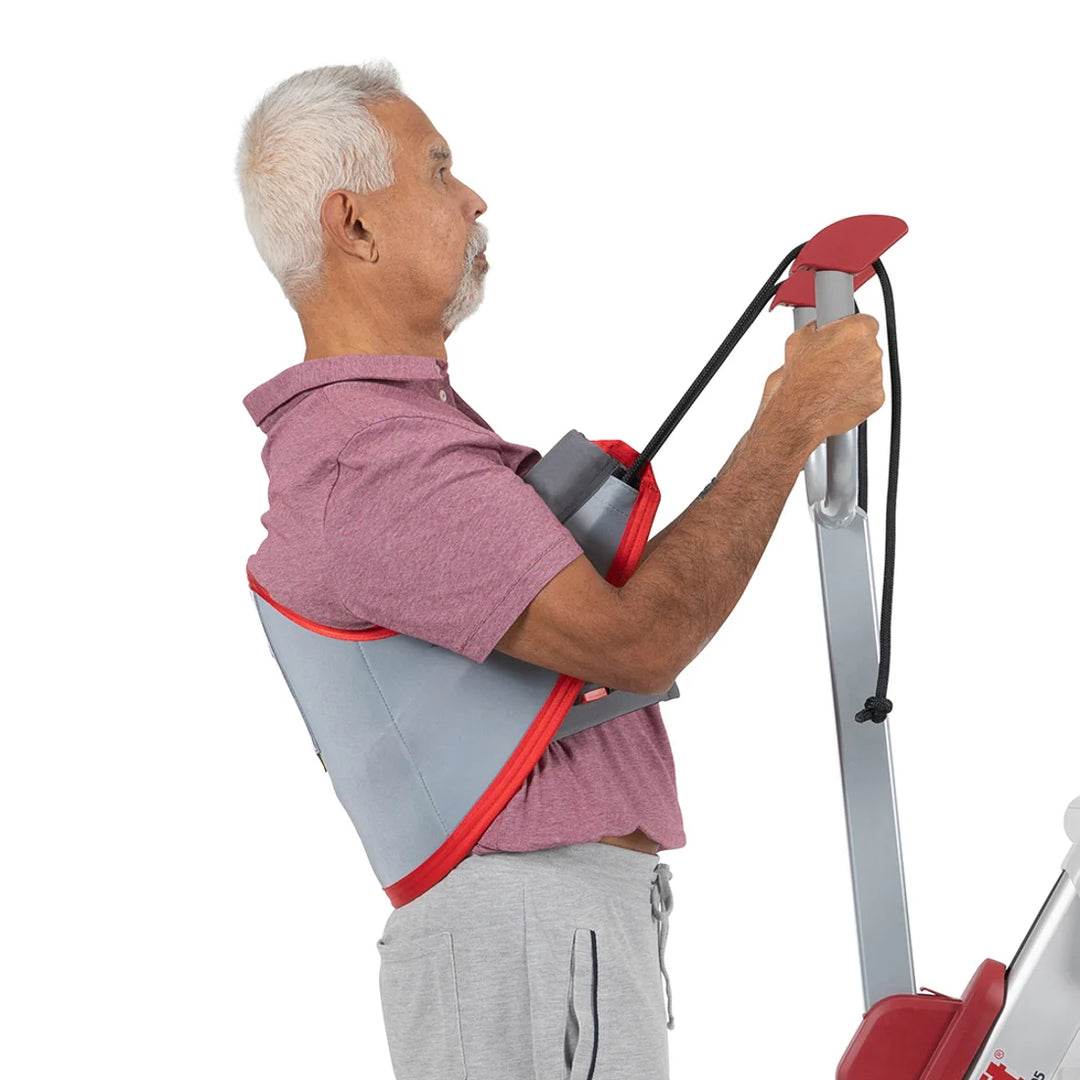Choosing the Right Patient Lift Sling for Safe and Comfortable Transfers

Selecting the right patient lift sling is essential for ensuring safety, comfort, and efficiency during patient transfers. At Reliable Ramps, we provide caregivers and medical professionals with trusted sling solutions designed to fit different lifts, environments, and mobility needs. Whether you’re using a floor lift, sit-to-stand lift, or ceiling system, an appropriate sling makes a major difference in patient outcomes and caregiver support.
Understanding the Role of a Patient Lift Sling
A patient lift sling is a supportive fabric seat used with a mechanical or powered patient lift to move individuals with limited mobility. These slings assist with lifting patients from a floor, chair, bed, wheelchair, or even the toilet, ensuring they are safely and comfortably repositioned without unnecessary strain on the caregiver.
Slings are integral to safe transfers, especially when the patient’s body needs extra support around the neck, head, thigh, or leg areas. They also reduce the physical burden on staff and help maintain the dignity and comfort of the patient throughout the process.
Sling Types and Their Applications
There are many sling types available, each designed to accommodate specific situations, body shapes, and levels of mobility. Understanding the features of each helps you choose the appropriate sling for your needs:
- Full Body Slings: Designed to support the entire body, including head support, these slings are ideal for patients with little to no upper body strength.
- U-Slings: Easy to apply and remove while in a sitting position, these slings are commonly used with wheelchairs and recliners.
- Toileting Slings: These provide a large opening to facilitate bathroom use and improve hygiene while offering enough support for safe lifting.
- Highback Slings: These offer additional upper body and neck support, ideal for patients who require greater stability.
- Mesh Slings: Constructed from breathable material, these are perfect for bathing or environments where the sling may get wet.
- Disposable Slings: Ideal for infection control in hospital settings, these are used once and discarded to maintain cleanliness.
Choosing the correct model depends on the patient’s ability to bear weight, the environment, and the type of lift being used.
Factors to Consider When Choosing a Patient Lift Sling
1. Size and Fit
Slings come in different sizes, from small to extra large, and must be selected according to the patient’s body dimensions. A sling that is too small may cause discomfort or unsafe transfers, while a sling that is too large could lead to improper positioning. Sizing charts based on height and weight (in pounds) can help identify the suitable option.
Proper fit and comfort are crucial for minimizing skin irritation and ensuring smooth transitions.
2. Material and Fabric Type
Slings are available in various materials such as polyester, nylon, or mesh. The choice depends on your setting:
- Mesh slings are ideal for wet conditions and bathing.
- Polyester slings offer durability and easy cleaning, making them suitable for high-traffic healthcare facilities.
- Nylon slings provide a lightweight feel while offering firm support and flexibility.
Each fabric offers specific benefits and may affect sling performance depending on the environment and frequency of use.
3. Attachment and Compatibility
Slings attach to lifts using either loop or clip attachments, depending on the lift model. Always confirm compatibility with your patient lift, such as floor lifts, sit to stand lifts, or ceiling hoists.
Some slings are labeled as universal, meaning they work with a range of devices, including Hoyer lift slings. Ensuring your sling is properly attached and reinforced at the stitch points is critical to patient safety.
4. Weight Capacity
Every sling comes with a defined weight capacity, often ranging from 250 to 600 pounds or more for bariatric use. You must consider both the patient’s body weight and any medical equipment that may be transferred simultaneously. Exceeding this capacity can lead to function failure or injury.
Enhancing Patient Comfort and Safety
For many users, especially those in a supine position, comfortably cradling the thighs, neck, and head is essential. Some slings come with added pad support to improve comfort and distribute pressure more evenly. Additionally, selecting a sling with a breathable or net fabric helps regulate temperature and prevent sweating.
In sensitive environments or long-term care facilities, the choice of sling can significantly impact patient comfort and satisfaction. A sling with a seat design tailored to the patient’s natural position reduces the need for frequent repositioning during transfers.
When to Replace a Sling
Frequent use of slings in high-demand environments leads to wear and tear, especially around strap connections and stitch lines. Signs you may need a new sling include:
- Fraying edges or torn fabric
- Broken or worn-out straps
- Faded or missing labels
- Damaged loops or clip attachments
Routine checks and maintenance help ensure slings remain safe and function as intended. Facilities may also benefit from keeping disposable slings on hand for emergencies or infection-control protocols.
Assisting Caregivers with the Right Equipment
A patient lift sling not only provides a secure and comfortable experience for the user but also enhances the caregiver’s ability to perform safe and efficient lifts. With the right sling, caregivers can minimize physical strain, reduce injury risk, and maintain confidence during transfers. Training on sling usage and specification adherence further ensures that every user benefits from optimal care and support.
At Reliable Ramps, we’re committed to offering slings that meet a wide variety of mobility needs. Whether you need a stand assist, toileting sling, or full-body support, our collection ensures there’s a suitable option for every patient population.